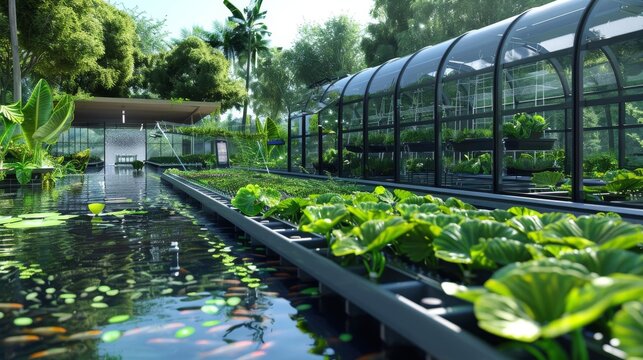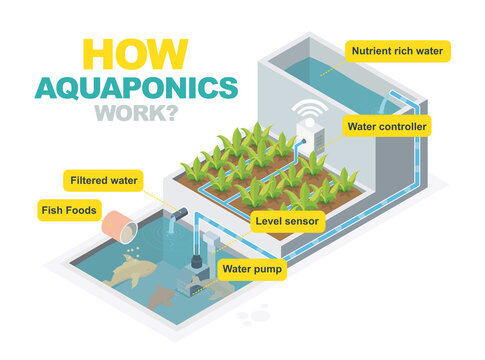
WHAT IT IS?
At its core, aquaponics mimics natural ecosystems. In a typical aquaponics system, fish waste provides organic nutrients for plants, while the plants help filter and purify the water, creating a balanced environment for both species. This closed-loop system minimizes the need for chemical fertilizers and significantly reduces water usage compared to traditional farming.


WHY IT´S COOL?
- Sustainability: Uses up to 90% less water than traditional farming methods.
- No Chemical Fertilizers: Relies on natural processes, promoting healthier food.
- Space Efficiency: Can be implemented in urban settings or small spaces, making it accessible for more people.
- Year-Round Production: With the right setup, crops can be grown year-round, independent of seasonal changes.
WHY IT HAS FUTURE GROWTH POTENTIAL?
Aquaponics has significant future growth potential for several reasons:
1. Sustainable Food Production
Aquaponics utilizes a closed-loop system that minimizes water usage and eliminates the need for synthetic fertilizers, aligning with global sustainability goals. As the demand for environmentally friendly farming practices rises, aquaponics is well-positioned to meet this need.
2. Urban Agriculture Opportunities
As urban populations expand, traditional farming space becomes scarce. Aquaponics can be implemented in small spaces, rooftops, and even indoors, making it a viable solution for cities looking to enhance local food production.
3. Rising Demand for Fresh and Organic Foods
Consumers are increasingly prioritizing fresh, organic, and locally sourced produce. Aquaponics provides high-quality fish and vegetables without chemical inputs, appealing to health-conscious consumers.
4. Technological Advancements
Ongoing innovations in aquaponics technology, such as automated monitoring systems and advanced nutrient management, enhance efficiency and yield, making it more attractive to both commercial growers and hobbyists.
5. Climate Resilience
Aquaponics systems can be set up in controlled environments, protecting them from extreme weather conditions and climate change impacts. This adaptability makes aquaponics a reliable option for food production in various regions.
6. Support from Educational and Community Initiatives
Growing interest in aquaponics within schools and community programs fosters awareness and engagement. These initiatives can cultivate a new generation of farmers and advocates, expanding the market and knowledge base.
7. Government Support and Incentives
As sustainable agriculture becomes a priority, governments may offer grants and incentives for aquaponics projects, reducing financial barriers and encouraging more entrepreneurs to enter the field.
8. Integration with Other Agricultural Practices
Research into integrating aquaponics with other sustainable practices can enhance productivity and efficiency. This holistic approach can attract a wider audience interested in innovative farming methods.



shabbir D
Vittoria Morace
Aster Baker